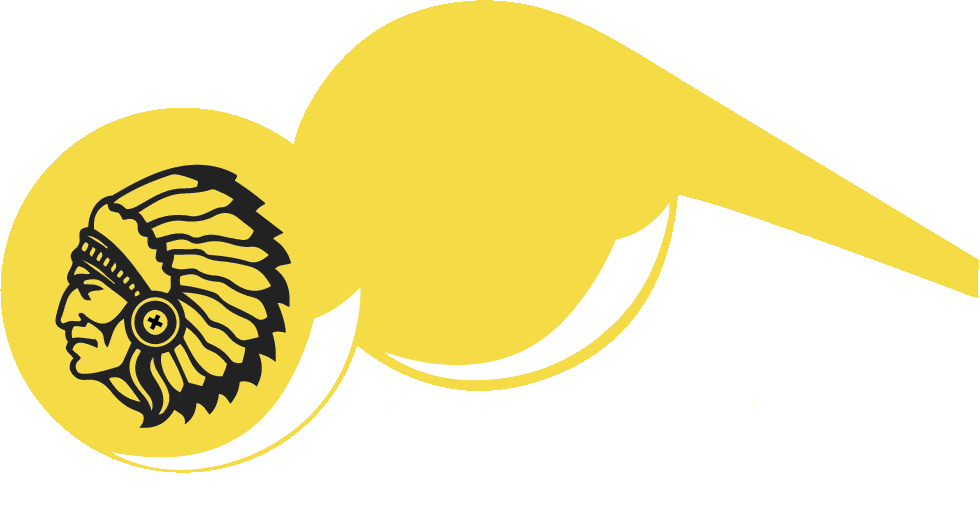- Homepage
- FAQ
F.A.Q

General
Our opening hours are as follows :
- Monday to Thursday: 8:30am to 12:00pm and 1:30pm to 5:30pm.
- Friday: 8:30am to 12:00pm and 1:30pm to 5:00pm.
- Saturday and Sunday: Closed
Please do not hesitate to contact us during these times for any questions or assistance.
Our team is happy to answer your questions and help you with your projects from Monday to Thursday, 08:30 to 12:00 and 13:30 to 17:30, and on Fridays, 08:30 to 12:00 and 13:30 to 17:00 (excluding public holidays).
You can also contact us by filling in the contact form here , or directly at the following email address: scalp@scalp-france.com.
Our head office is located at the following address: ZI de la Poudrette 8-14, Allée de Bruxelles 93320 Les Pavillons-sous-Bois, France
You can find downloadable data sheets for our products on our website.
We offer a wide range of products for the construction, industry and transport sectors.
Our main product categories include :
- Stripping products : Effective solutions for removing paints, varnishes and other coatings.
- Cleaning products : Specialized products for in-depth surface cleaning.
- Protection products : Solutions to protect various surfaces against weathering, corrosion and other damage.
- Treatment products : Products designed to improve the durability and appearance of materials.
To subscribe to the SCALP newsletter, simply enter your e-mail address in the box at the bottom of the page. You'll then receive regular news and tips for your projects.
For expert advice on your project, there are several ways to contact us. Send us an e-mail at scalp@scalp-france.fr, use the contact form on our website, or call us directly at 0148483976. Our team will be delighted to assist you and answer any questions you may have.
To contact us, please fill in this form by clicking here.
Paint strippers
A chemical stripper is a product used to remove old layers of paint, varnish or other surface coatings. It works by softening or dissolving these layers, facilitating their removal.
Our strippers can be used on a variety of surfaces, including wood, metal, concrete and stone. Check the specific recommendations for each product to ensure proper use.
Action time depends on the type of product and the layer to be removed. In general, this can vary from a few minutes to several hours. Please consult the product data sheet for precise instructions.
Yes, some of our strippers can be used indoors, but it's important to ventilate the area well during use. For indoor applications, give preference to products with reduced VOC (volatile organic compound) emissions.
We offer an EKO'R range of environmentally friendly strippers that are formulated without harmful solvents and are biodegradable in accordance with OECD standards.
Yes, our SCALPEX AL 23 paint stripper is recommended for removing lead paint, but it's essential to take extra precautions. Lead paint removal must be carried out in a safe environment, following strict protocols to avoid contamination.
Consult our product data sheets or contact our team to help you choose the right stripper for the surface and type of coating to be removed.
A gel stripper is thicker and clings better to vertical surfaces, avoiding drips and allowing a longer action time. A liquid stripper is better suited to horizontal surfaces or jobs requiring rapid application.
Universal strippers can be used to remove many types of coating, such as paint, varnish, wax and adhesives. The choice between gel and liquid depends on the surface to be treated and ease of application.
Effectiveness depends on the nature of the coating to be stripped and the conditions of application. Gel is particularly effective on vertical or hard-to-reach surfaces, while liquid is more suitable for flat surfaces and projects requiring rapid action.
For vertical or textured surfaces, choose a gel stripper that will stay in place longer. For horizontal surfaces or simpler stains, a liquid stripper may be quicker and more practical.
A facade stripper is a product specially formulated to remove coatings such as paint, plaster or rendering from facade surfaces such as concrete, brick or stone.
Cleaning products
Nous offrons une gamme complète de nettoyants adaptés à différents usages et types de surfaces. Vous trouverez des nettoyants spécialisés pour les façades, les toitures, les sols, ainsi que des nettoyants universels pour les travaux quotidiens. Chaque nettoyant est formulé pour éliminer efficacement tout type de salissures (salissures rouges, vertes, noires et les traces de pollution).
A facade cleaner is a product specially formulated to remove dirt, green, black and red marks and traces of pollution from exterior surfaces such as concrete, stone, brick and plaster.
Façade cleaners can remove a wide range of soiling such as air pollution, green, black and red marks, as well as soot and grease stains.
An all-purpose cleaner is a versatile product that can be used to clean a variety of surfaces, whether indoors or out. It is designed to remove common soils, such as grease, dust and embedded stains.
Universal cleaners can be used on many surfaces, including tiles, wood, metal, plastic and even painted surfaces. Be sure to check the recommendations for use on the technical data sheet.
Water repellents
A water-repellent product is a treatment that protects surfaces against water and moisture. It prevents water from penetrating the material while allowing the surface to breathe, thus preventing moisture damage.
The use of a water repellent protects surfaces against water infiltration, reduces the risk of frost cracking, limits the appearance of moss, algae and lichen, and prolongs the life of materials.
Yes, it's essential to clean the surface before applying a water repellent to ensure good adhesion and maximum effectiveness of the treatment. The surface must be clean, dry and free of dirt.
A façade water repellent protects the façade against humidity, driving rain and water infiltration. It also prevents damage caused by frost, moss and algae.
Façade water repellents can be applied to a wide range of materials, including brick, stone, concrete and plaster. It's important to choose a water repellent adapted to the facade material for optimum protection.
A roof water repellent protects against water infiltration, reduces the build-up of moss, lichen and algae, and prevents cracking due to temperature variations. It also helps extend the life of tiles and slates.
Roof water repellents can be applied to clay tiles, slate, concrete tiles and other porous materials. It's important to choose a water repellent compatible with the roofing material.
Yes, it is necessary to clean the roof and remove all moss and lichen before applying the water repellent. This ensures better adhesion and longer-lasting protection.
Floor water repellents are suitable for porous surfaces such as concrete terraces, cobblestones, natural stone slabs and so on. They protect surfaces against water and stains.
A water repellent for exterior floors prevents water penetration, reduces the risk of moss formation, facilitates cleaning and protects against grease, wine and other liquid stains. This helps preserve the floor's appearance and extend its life.
Algaecides-biocides
An algaecide is a specific type of biocide designed to eliminate algae. Algaecides are used on surfaces exposed to moisture to prevent and treat the growth of algae, which can cause damage and health problems.
A biocide is a substance or mixture designed to destroy, repel or render harmless harmful organisms. Biocides are used to protect materials and surfaces against bacteria, fungi, viruses and other undesirable organisms.
An algaecide is a specific type of biocides designed to target and eliminate algae. Biocides, on the other hand, encompass a wide range of chemicals designed to control a variety of microorganisms, including bacteria, fungi and viruses.
Yes, it is advisable to clean the surface before application to ensure greater effectiveness. This may include brushing, or removing organic residues.
Anti-graffiti
An anti-graffiti cleaner is a chemical product designed to remove graffiti (paint, markers, etc.) from surfaces such as walls, facades and monuments. They are formulated to act effectively without damaging materials.
Anti-graffiti cleaners can be used on a variety of materials, including concrete, brick, metal and stone. However, it is important to check the product's compatibility with the surface before application.
Most anti-graffiti cleaners are effective against a variety of graffiti, but some types of paint or marker may require specific products. Consult the manufacturer's recommendations for the type of graffiti to be treated.
An anti-graffiti product is a treatment that forms a barrier on surfaces to prevent graffiti from adhering. This facilitates cleaning by preventing paint or markers from penetrating the material.
Graffiti protection products can be applied to a variety of surfaces, including concrete, brick, wood and stone. They are ideal for walls exposed to graffiti and tagging.
If you need to remove existing graffiti, use an anti-graffiti cleaner. To protect a surface against future graffiti, opt for a graffiti protection product. The use of both products can also be complementary.
Hardeners, consolidants and anti-saltpeter
A hardener is a product used to increase the strength and durability of materials (concrete, stone, brick, etc.). It works by penetrating the material to create a harder, more wear-resistant surface.
Hardeners contain chemical agents that react with the material's components, improving its internal structure. This reduces porosity and increases resistance to water, chemicals and abrasion.
Hardeners are mainly used on concrete, brick and stone surfaces, but can also be applied to pavers, slabs and similar materials.
A consolidant is a product used to reinforce the structure of porous materials such as stone, concrete and brick. It penetrates the pores of the material to improve its mechanical strength and durability.
Use a consolidant when you want to restore or strengthen damaged or fragile surfaces, such as old stone walls or ageing concrete slabs. It is particularly useful in heritage conservation.
An anti-saltpeter product is a treatment designed to prevent or reduce the appearance of saltpeter (white salt deposits) on walls and facades, often caused by dampness. It helps maintain surface integrity by blocking salt migration.
Anti-salt products work by creating a barrier that prevents moisture and salts from migrating through the material. They can also strengthen the surface, making it more resistant to moisture damage.
Anti-salpeter products can be applied to interior and exterior walls, particularly those exposed to damp or condensation problems. They are often used in damp environments or in cases of capillary rise.
Complementary products
A degreaser is a chemical product designed to loosen and remove rusted or seized parts, making it easier to dismantle screws, bolts and other mechanical components.
Apply the degreaser directly to the seized area and leave for a few minutes. Then try unscrewing or dismantling the part. If necessary, repeat the application for best results.
A wood degreaser is a chemical product that restores the original appearance of wood surfaces by removing stains, graying and deposits caused by weathering and sun exposure.
Use a degreaser when wood begins to discolor or look gray, often after months or years of exposure to the elements. This prepares the wood for a new finish or protection.
A paper remover is a product designed to facilitate the removal of wallpaper, by loosening the glue used during application.
Apply the remover directly to the wallpaper using a brush or roller, making sure to saturate the paper. Leave to act as instructed, then carefully remove the paper.
The environment
SCALP products are still chemical products. It is therefore advisable to always protect plants close to the area to be treated.
SCALP's policy is to design products that are as eco-friendly as possible. To this end, we have developed an EKO'R range.
This range embodies our commitment to a more respectful chemistry. Each product is designed with special attention to reduce its environmental impact :
- Use of raw materials of natural and vegetable origin.
- Reduced carbon footprint from manufacturing and transportation.
- Selection of eco-friendly packaging: recycled and recyclable.
We reduce our carbon footprint by optimizing our manufacturing processes, using sustainable raw materials and promoting short distribution channels : for more information.

